Run 5
2005 Beamline Calibration
Information about how this calibration is done, and links to other years, can be found BeamLine Constraint.
With the large number of special triggers in the 2005 pp data, I need to be judiscious about running the calibration pass. I want to be sure that the triggers I use do not bias the position of the reconstructed vertex in the transverse plane for a given z. As the DAQ files come and go quickly from disk, I also wanted to be able to do this study from the event.root and/or MuDst.root files on disk.
Using event.root and MuDst.root files
It would be nice to use the already-produced event.root files from FastOffline to do the beamline calibration. The first question to ask is, was the chain used for FastOffline sufficient for doing this?
FastOffline has been running with the following chain:
P2005 ppOpt svt_daq svtD EST pmdRaw Xi2 V02 Kink2 CMuDst OShortR
This causes StMagUtilities to run with the following options:
StMagUtilities::ReadField Version 2D Mag Field Distortions + Padrow 13 + Twist + Clock + IFCShift + ShortedRing
I believe these are indeed the distortion corrections we want turned on (no SpaceCharge or GridLeak, whose distortions should smear, but not bias the vertex positions).
Our old BFC chain for doing this calibration was:
ppOpt,ry2001,in,tpc_daq,tpc,global,-Tree,Physics,-PreVtx,FindVtxSeed,NoEvent,Corr2
The old chain uses Corr2, but we're now using Corr3. The only difference between these is OBmap2D now, versus OBmap then, which is a good thing. Also, we now have the svt turned on, but it isn't used in the tracks used to find the primary vertex (global vs. estGlobal). So this is no different than tpc-only. I have not yet come to an understanding of whether PreVtx (which is ON for the FastOffline chain) would do anything negative. At this point, it seems acceptable to me.
In order to use the FastOffline files, I modified StVertexSeedMaker to be usable for StEvent (event.root files) in the form of StEvtVtxSeedMaker, and MuDst (MuDst.root files) in StMuDstVtxSeedMaker. The latter may be an issue in that it introduces a dependency upon loading MuDst libs when loading the StPass0CalibMaker lib (add "MuDST" option to chain).
Testing trigger biases
Using the FastOffline files, I wanted to see which triggers would be usable. There is the obvious choice of the ppMinBias trigger. But these are not heavily recorded: there may be perhaps 1000 per run. So fills with just a few runs may have insufficient stats to get a good measure of the beamline. Essentially, ALL ppMinBias triggers would need to be examined, which means ALL pp files with these triggers! While performing the pass on the data files does not take long, getting every file off HPSS and providing disk space would be an issue. Discussions with pp analysis folks gave me an indication that several other triggers may lead to preferential z locations of collision vertices (towards one end or the other), but no transverse biases. This is acceptable, but I wanted to be sure it was true. I spent some time looking at the FastOffline files to compare the different triggers, but kept running into the problem of insufficient statistics from the ppMinBias triggers (the prime reason for using the special triggers!). Here's an example of a comparison between the triggers:
X vs. Z, and Y vs. Z:
(black points are profiles of vertices from ppMinBias triggers 96011, red are special triggers 962xx, where xx=[11,21,33,51,61,72,82])
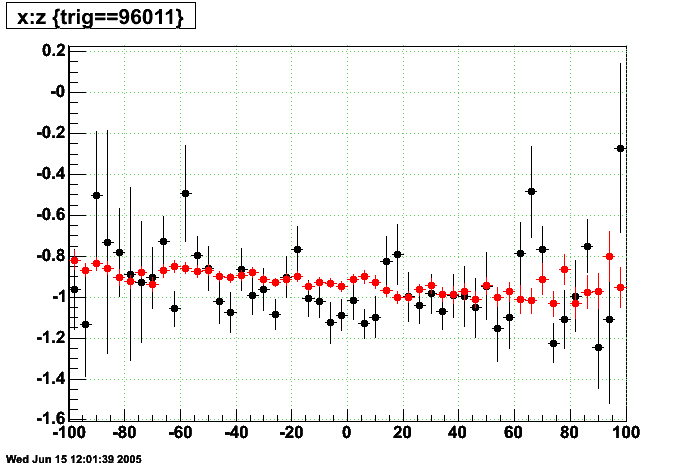
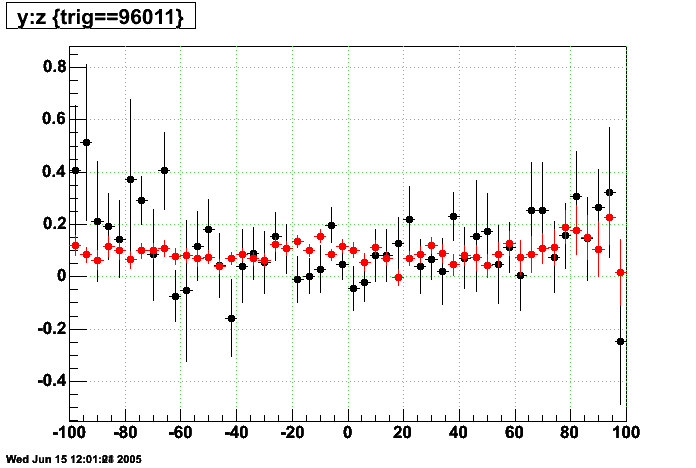
First Calibrations pass
Using minbias+special triggers from about 1000 MuDst files available on disk, here's what we get:

This can be compared to similar plots for Run 4 (pp), Run 3 (200 GeV dAu and pp), and Run 2 (200 GeV pp).
The trigger IDs I used were:
96201 : bemc-ht1-mb 96211 : bemc-ht2-mb 96221 : bemc-jp1-mb 96233 : bemc-jp2-mb 96251 : eemc-ht1-mb 96261 : eemc-ht2-mb 96272 : eemc-jp1-mb-a 96282 : eemc-jp2-mb-a 96011 : ppMinBias 20 : Jpsi 22 : upsilon
Calibrating the current pp data for 2005 will mean processing about 5000 files, daq or MuDst.
Full Calibrations pass
To make sure we had all the final calibrations in place (TPC drift velocity in particular), we ran the calibration pass over the DAQ files. This produced the following intercepts and slopes from the full pass and aggregation:

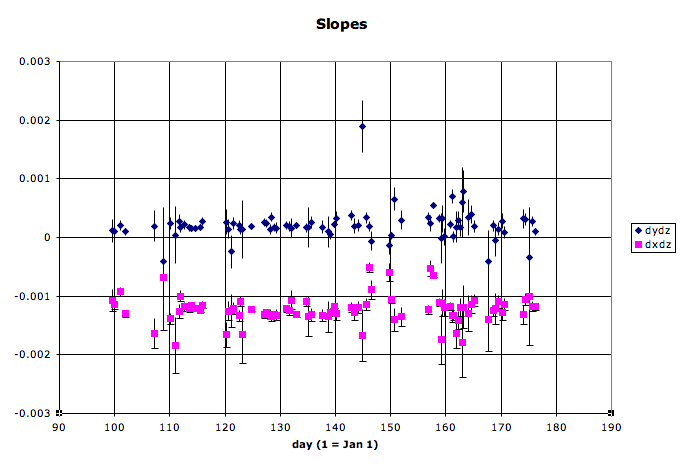
I removed a few outliers and came up with this set, which went into the DB:
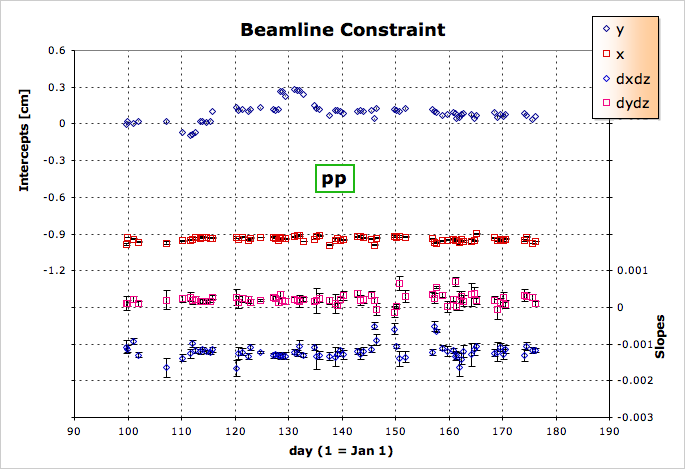
Jerome reminds me that we are still missing the high energy pp run, sqrt(s)=410 GeV. Lidia reminds me we are missing the ppTrans data. So, I did those two and added a few statistics to fills we had already done. The result is this:
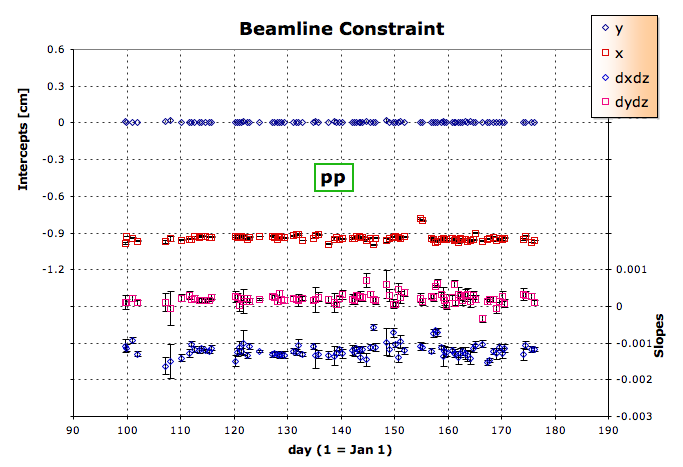
- Printer-friendly version
- Login or register to post comments
